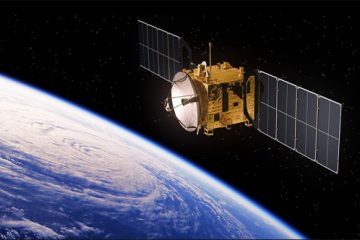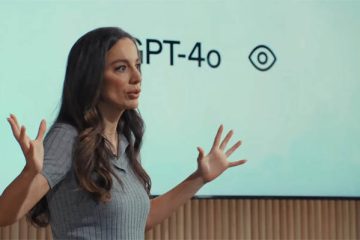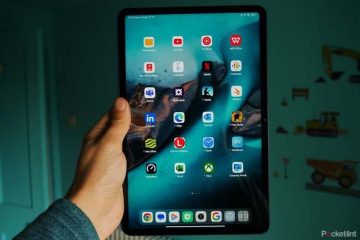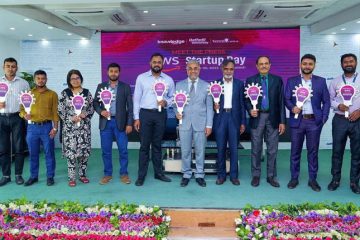Before I dwell on the subject- latest developments in technology- I wish to touch upon a few scientific truths to guide the readers to better appreciate my points of view. Progress of science happens exponentially, not linearly, meaning that exponential curve starts slowly and then skyrockets towards infinity. Accumulation of knowledge is like an inverted pyramid; twentieth century witnessed inventions and discoveries in great number of fields so much in depth and breadth that all the past inventions and discoveries combined up to the end of nineteenth century pales into insignificance in comparison. Einstein is now synonymous with genius. There is every possibility that his epoch-making inventions would not have come to fruition had there been no scientists like Max Planck, Clark Maxwell, Niels Bohr, Michelson and Morley and FitzGerald and Lorentz and mathematicians like Gauss. Sir Isaac Newton once said, “If I have seen further than others, it is by standing upon the shoulders of giants.” The far-reaching inventions and discoveries by the greatest minds followed many groundbreaking works of some others in the immediate past. One of the most important aspects of scientific discoveries is that whenever man broke with traditional wisdom and relied on reasons based on mathematics, not on our sensory organs, he achieved major success in science and technology. The history of human civilization is littered with innumerable examples of this truth. The most dependable tool to understand the universe and how it is governed is mathematics and I repeat none but mathematics. In fact, mathematics is the language of the universe, that is, the nature of the universe manifests in laws that are describable only by mathematics. The scientists gain insight of the laws of the universe and how the universe is evolving by analyzing mathematical formulas. Another important fact about scientific discoveries is that the latest scientific truth comes about mostly from the toils of theoretical physicists, and the inventions then are verified and confirmed in experiments conducted by experimental physicists. Chemistry is called by many scientists a set of effective theories of physics, and so are all life sciences. Technologies are various applications of fundamental discoveries in physics. While I shall attempt at illustrating the on-going advances in different technological fields, I would like to paraphrase, at the outset, what was articulated by Raymond Kurzweil, who is regarded by many as a genius or tech-guru, but criticised by many evenly balanced as one of the greatest hucksters of the age. Kurzweil believes that we are approaching a moment when computers become more intelligent than humans. This intelligence, something comparable to human, is what we mean by Artificial Intelligence. According to Kurzweil, computers will perform, what our brain is doing to create consciousness, not only just doing arithmetic very quickly or composing piano, which they do right now, but also driving cars, writing books, making ethical choices, appreciating fancy paintings, making witty observations at cocktail parties and many others what we characteristically call the unique traits of humanness.
We might one day share the planet with these smarter-than-human computers. There are several theories about how and in what manner we may have to share. One theory suggests that we may merge with them to become superintelligent cyborgs, also known as cybernetic organisms, that is, beings with both biological and artificial (e.g. electronic, mechanical or robotic) parts. In other words, we may be using robotic arms and legs to enhance our physical abilities and computers’ memory and computing powers to extend our intellectual abilities the same way cars and aeroplanes extend our physical abilities. Maybe, we will scan our consciousness into computers and virtually live inside them as software forever. Another possibility is that computers/ robots turn hostile and take on humans and annihilate them. Whatever may be the outcome, one prediction that all these theories have in common is the transformation of our species into something that is beyond recognition to humanity had 100 years into the future been projected today. This transformation has been given a name- singularity, not the singularity we know of in physics, that is, the collapse of spacetime into a point of infinite curvature and density. Kurzweil and a few others view that given the exponential rate of increase in computing power and the vast reduction in the cost of disc space, data storage and system memory, the quantity of artificial intelligence created by 2050 will be more than a billion times the sum of all human intelligence that exists today. One interesting point is made by Kurzweil.
We can define an ultraintelligent machine as something as can far surpass all the intellectual activities of any man however smart he may be, and that machine will self-replicate.
Thus, the first ultraintelligent machine will be the last invention that men need to ever make. A group of hyper tech-savvy people like Kurzweil who believe in singularity has formed a hive of like-minded thinkers known as Singularitarians. Two institutions- Singularity University and Singularity Institute for Artificial Intelligence have been set up to achieve the goals as envisioned by Singularitarians- how to achieve singularity or the man-machine symbiosis peacefully and achieve immortality.
Now I shall attempt at illustrating the emerging and advanced fields of technologies and in conclusion my personal views of the future that awaits humanity in the later part of twenty-first century and beyond. There is no doubt that computer will be at the forefront of every technological advance.
Although, terabytes (1 terabyte is 1000 gigabytes) are fairly common capacity in hard drives these days, common people like me are used to the data storage capacity of gigabytes only, which is 1000 times mega and which can store about 133,250 text pages.
However, images and music need much more storage capacity. If you were to combine every CD, analogue tape, book, newspaper and USB wafer and put all that information on one hard drive, how big would it be? The answer, say researchers at the University of Southern California, is 295 exabytes, an exabyte being the equivalent of 1 million terabytes or 1000 petabytes. There are currently no hard drives in the exabyte range, although in 20 years time exabyte capacity will be commonplace. !000 exabytes make one zettabyte and 1000 zettabytes one yottabyte and so on. Computer scientists are now talking about DNA computing, chemical computing, optical computing and spintronics based computer and the like.
They are experimenting with AIs in different ways. One project is aimed at creating an artificial general intelligence (AGI) with the capabilities of a 3-year toddler. Some experts suggest that the best way to create an AI is to rear one like parents would rear a human child. Ben Goertzel, CEO of Biomind LLC and Novamente LLC is working to create self-improving AI avatars and let them loose in virtual worlds like Second Life. They could be virtual babies or pets that the denizens of Second Life would want to play with and teach. They would have virtual bodies and senses that enable them to explore their worlds and to become socialised. Unlike real babies, these AI babies have an unlimited capacity for boosting their level of intelligence. Imagine if an AI baby developed super-intelligence but had the emotional and moral stability of a teenage boy? James Hughes of IEET portrayed an alternative scenario of what might happen with a rogue AI in the Web, pointing to the havoc currently being wreaked by the Storm Worm.
Storm has infected over 50 million computers and now has at its disposal more computing resources than 500 supercomputers. More disturbingly, when Storm detects attempts to thwart it, it launches massive denial-of-service attacks to defend itself.
Nanotechnology is one area where advances of its applications are phenomenal. Materials at the nano level (one nano meter is one billionth of a meter), display unique and exciting properties that can be employed to develop new electronics, optics, mechanical devices, biotechnology, biomedical materials and fulfill many pressing needs- harvesting sunlight more efficiently, decomposition of greenhouse gases by nano particles, drug delivery system like vectors, nutraceutical drinks, an electronic nose to detect and analyze cancer by analyzing breath sample, biomedical scaffolding materials to repair and regrowth of damaged tissues in cardiovascular and nervous systems and many more.
Uri Sivan and two others at the Technion Institute in Israel assembled DNA and silver into a conductive wire, also manufactured by applying nanotechnology, one thousandth of the width of a human hair leading the way to making faster and sophisticated computer chips. Prof. Sivan and other scientists at the Institute also wrote out the whole Old Testament onto the top of a pin.
Biotechnology and life sciences are at the forefront of cutting edge technologies. Nanotechnology is now being combined with biotechnology to cure diseases, prolong life and such other things as are still the topics of science fictions.
Living DNA is being used to create new generations of electronics like self-assembling transistors. To enhance computer speed and memory, scientists are experimenting with using carbon nanotubes to squeeze in increasing number of transistors onto a chip. Self-assembling ability of these nanocircuits will enable large-scale manufacturing of apparel with shock-resistant protective coating that is five times stronger than iron, waste water purification systems and many other advanced materials and electronics and microsystems such as 4G cellular communication, 3D data storage, quantum computing, organic light-emitting diode, cloak of invisibility (a person will disappear by donning the particular cloak), implantable eye-pressure monitor for glaucoma patients and implantable electrodes inside brain for paralysed patients to guide robots. Accounts of on-going researches are described below:
1) Mapping- Humans have roughly 25000 genes in each cell, which are active. These genes produce millions of proteins to carry out metabolic processes. Scientists are making a complete map of metabolic system, called metabolome. In other words, they are cataloguing and characterizing the complete set of metabolites, which are small molecules, involved in primary (such as alcohol, amino acids, nucleotides, organic acids and vitamins and so on) and intermediate metabolic processes and are products or markers of final he stage of the processes. It is estimated that humans may have 100,000 metabolites involves in metabolism, of which only about 3000 metabolites have been catalogued. Mapping of the complete networks of brain is also in the offing.
2) Aging and immortality- Extensive research is going on in the field of aging, particularly to unlock mysteries how cells die (telomeres at the end of 23 pairs of chromosomes are responsible) and how cells can be protected from dying (telomerase, an enzyme can protect cells from dying by stopping shortening of telomeres) without adverse effect of uncontrollable growth. Singularitarians and some others like the pioneer of cryogenics believe old age is an illness like any other and as such is curable. A British biologist De Gray founded a foundation called SENS (Strategies for Engineered Negligible Senescence). He partnered with Terry Grossman, a doctor who specializes in longevity medicine to develop medicines for extension of life. De Gray authored two books on longevity.
3) Cancer- nanoparticles made of biodegradable polymers (iron nanoparticles are being injected) are being used to isolate and attack tumors. Drug molecules are fused into nanocarriers (used as vectors) to attack only cancer cells without destroying normal cells.
4) New generation of antibiotics- Quorum sensing (inter and intra bacterial communication systems) inhibitors, which are new class of medicines, are being tested.
5) Decoding brain to create map or connectome (a comprehensive map of all neural connections in the brain) of 100 billion brain cells and their trillions of connections.
6) Misc. – Vaccines of malaria and some other maladies are being tested. Alzheimer’s vaccine is being developed. New effective treatments of Parkinson disease and multiple sclerosis are in the offing. Several obesity drugs are being tested.
What is the future of humanity? It is a question that must be at the heart of every thoughtful person. There is no doubt human beings will be smarter, healthier and be able in the foreseeable future to unlock all the mysteries of the universe.
Does it mean they will be able to find answers to the questions that scientist like Stephen Hawking has been deliberating in their imaginative and thought-provoking books and essays? Why do we and the universe exist? Why are the governing laws of the universe so fine-tuned as to permit emergence of life on earth and finally the evolution of sentient beings like us? Does it mean that finding the answers will end the human’s quest for truth? Does it mean that unlimited technological prowess will guarantee for humanity happier life and safety and security of living? The answer to the last question is far more complex than finding answers to scientific and technological queries.
Scientists and technologists can provide better amenities of life, but can’t ensure safety and security because that depend on the wisdom of political leaders and in equal measure on social and religious leaders and their combined decisions.
Is humanity destined to be annihilated by degrading environment, rash decisions on adopting rogue technologies and fratricidal wars and conflicts or is there any alternative? The alternative to doom lies not only on the wisdom of political leaders, but on the collective wisdom of social activists, religious leaders and every sane and peace-loving individual. Live and let live!











